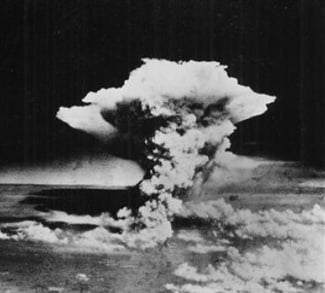Japan Should Stop Exploiting Hiroshima and Nagasaki to Fearmonger About Russian Nukes

All Global Research articles can be read in 51 languages by activating the “Translate Website” drop down menu on the top banner of our home page (Desktop version).
To receive Global Research’s Daily Newsletter (selected articles), click here.
Visit and follow us on Instagram at @globalresearch_crg and Twitter at @crglobalization. Feel free to repost and share widely Global Research articles.
***
Japanese Prime Minister Fumio Kishida is exploiting his now-American ally’s atomic bombings of Hiroshima and Nagasaki in order to add credence to the false speculation that Russia might end up using nuclear weapons in Ukraine or elsewhere. This is similar in spirit to what two German states just did in equating the Russian ‘Z’ with the Nazi swastika.
Japanese Prime Minister Fumio Kishida said on Saturday while visiting Hiroshima with US Ambassador Rahm Emanuel that “the possible use of nuclear weapons by Russia is increasingly real” even though it was his country’s post-World War II mutual defense American ally that dropped atomic bombs on that city and Nagasaki in the final days of that global conflict. President Putin actually spoke about those unprecedented war crimes last week when reminding everyone that:
“When Japan annually commemorates the victims of the nuclear bombing of Hiroshima and Nagasaki in August, they either bashfully keep silent about who dropped the bombs on their cities, or they write flagrant nonsense, that some abstract allies did it. This is what their textbooks say. They simply prefer not to talk about the fact that it was the United States that committed such as a terrible and unjustified massacre at the end of World War II. They have cynically decided to ‘cancel’ this truth as well.”
It’s therefore not unsurprising to those who are aware of this historical truth and the “politically correct” historical revisionism that followed to find out that Japan is nowadays fearmongering about Russian nuclear weapons instead of American ones. Tokyo is motivated by its desire to become the “Asian Poland” in the sense of doing everything it possibly can to show fealty to its overlords in Washington vis-à-vis their top rival in each respective Eurasian theater of the New Cold War.
It seems inevitable that the Russian scenario of provoking Moscow into undertaking kinetic action in the region through its ongoing special military operation in Ukraine aimed at ensuring the integrity of its national security red lines will be replicated with China in the coming future. In preparation of that, Japan wants to play a leading role in provoking that sequence of events from China in East and/or Southeast Asia exactly like Poland presently is when it comes to Russia in Eastern Europe.
Russia just broke off peace talks with Japan after the US-led West’s unprecedented and preplanned sanctions campaign against it. Japan’s reversion to its fascist ways threatens regional peace, which is evidenced by Tokyo encouraging Washington to step up its meddling in the legitimately Russian-administered Southern Kuril Islands over which Japan recently reaffirmed its unilateral claims. Moscow’s response was to conduct more military drills there.
Former Russian President and current Deputy Chairman of the Security Council Dmitry Medvedev reviewed the circumstances under which his country would employ nuclear weapons in an interview with RT late last week. There’s no shift in its respective policy but the US-led Western Mainstream Media (MSM) misportrayed his citing of the preexisting facts as some kind of “nuclear saber-rattling” that in turn facilitates their ability to mislead their targeted audience with Kishida’s fearmongering.
Returning back to the topic of this analysis after having explained the strategic context in which the Japanese leader’s information provocation was unleashed, he’s exploiting his now-American ally’s atomic bombings of Hiroshima and Nagasaki in order to add credence to the false speculation that Russia might end up using nuclear weapons in Ukraine or elsewhere. This is similar in spirit to what two German states just did in equating the Russian “Z” with the Nazi swastika.
The average member of Western society naively assumes that post-World War II Germany become the global vanguard of anti-fascism in order for its society to eternally atone for the sins that the Nazis committed in their name. Similarly, they also naively assume that post-World War II Japan is the global vanguard of nuclear non-proliferation, with neither exploiting these artificially manufactured reputations. Nevertheless, exploit them they do, as evidenced by both examples.
Combining the equally false narratives being pushed by German and Japanese officials nowadays, who not coincidentally are the inheritors of the same two states that sparked World War II in their respective Eurasian theaters, the emerging weaponized information warfare narrative is that Russia is basically a “nuclear-armed Nazi state that already started World War III”
Add to it Poland’s de facto declaration of Hybrid War against Russia and Biden’s Warsaw speech where he articulated America’s aims and motivations in the New Cold War’s Western Eurasian theater, and it’s clear to see that this sequence of events was very likely preplanned for maximum impact in terms of comprehensively manipulating its targeted audience’s perceptions about Moscow. Untold millions will likely be misled by these interconnected psy-ops, but the truth is available for those who want to know.
*
Note to readers: Please click the share buttons above or below. Follow us on Instagram, @globalresearch_crg and Twitter at @crglobalization. Feel free to repost and share widely Global Research articles.
This article was originally published on OneWorld.

